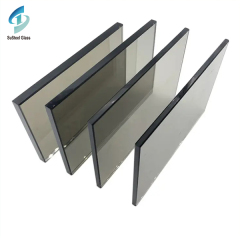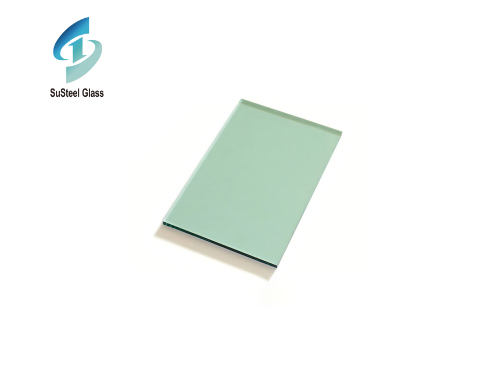Anti-slip glass, also known as non-slip or slip-resistant glass, is a specialized type of glass designed to minimize the risk of slips and falls in various environments. With its unique surface texture and traction-enhancing properties, anti-slip glass offers a practical solution for improving safety in both residential and commercial settings.
One of the primary applications of
anti-slip glass is in flooring systems, particularly in high-traffic areas where slip hazards pose a significant risk. By incorporating a textured surface, typically achieved through processes such as acid etching or sandblasting, anti-slip glass provides increased traction underfoot, reducing the likelihood of accidents, especially in wet or slippery conditions. This makes it ideal for use in bathrooms, swimming pool decks, and outdoor walkways where water or moisture is present.
Moreover, anti-slip glass finds utility in architectural features such as staircases, ramps, and balconies, where adherence to building codes and safety regulations is paramount. Its ability to enhance grip and stability on surfaces helps prevent slips and falls, particularly in areas frequented by children, elderly individuals, or individuals with mobility impairments. Additionally, anti-slip glass can be customized to complement various design aesthetics, offering both safety and visual appeal.
In addition to its applications in flooring and architectural elements, anti-slip glass is also utilized in specialized environments such as transportation infrastructure and industrial facilities. In transportation, it is commonly used in train platforms, bus shelters, and pedestrian bridges to ensure safe passage for commuters and travelers. In industrial settings, anti-slip glass provides a secure footing for workers in areas prone to spills, oil, or grease, reducing the risk of workplace accidents and injuries.
The benefits of anti-slip glass extend beyond safety to include durability, ease of maintenance, and aesthetic versatility. Its robust construction and resistance to wear make it a long-lasting solution for high-traffic areas, while its smooth surface facilitates effortless cleaning and upkeep. Furthermore, anti-slip glass is available in a variety of colors, patterns, and finishes, allowing designers to incorporate it seamlessly into diverse architectural and interior design schemes.
In conclusion, anti-slip glass stands as a practical and effective solution for enhancing safety in residential, commercial, and industrial environments. Its traction-enhancing properties, durability, and aesthetic versatility make it a preferred choice for architects, designers, and building owners seeking to mitigate slip hazards while maintaining visual appeal. As awareness of safety concerns continues to grow, the demand for anti-slip glass is expected to rise, driving innovation and adoption in construction and design industries worldwide.



 Exploring the World of Green Tinted Glass Products: Versatility and Sustainability
Exploring the World of Green Tinted Glass Products: Versatility and Sustainability
 Exploring the Versatility and Elegance of Custom Thick Glass
Exploring the Versatility and Elegance of Custom Thick Glass



